
A Brief History of Drouyn & Drouyn
Australia’s oldest musical instrument manufacturers?
The story of Drouyn and Drouyn, musical instrument makers from Queensland, Australia, deserves to be told in full. Unfortunately, there is little evidence left of this successful Australian company; except for the instruments, which are both exceptional and quite rare. These pages are my contribution to the Drouyn story. I welcome corrections and contributions. If you have anything to add, please contact me.
Many of the images in this section were generously provided by Dimitris Petinakis, whose family now owns the Drouyn House site on Logan Road. My sincere thanks to Dimitris.
An exceptional family.
Long before Brady or Sleishman (who play their own role in this story) Australian drums were being manufactured in a small factory in the suburb of Stones Corner, Brisbane, Queensland. Brother and sister Douglas and Dorothy Drouyn (pronounced “drew-in”), both shared a love of music. Douglas was an accomplished musician. A search through the National Library archive Trove finds many of his gigs, including a tour through Queensland as far north as Cairns, in 1939. He played baritone saxophone in a duo with an accordianist, Ossie Mazzie. They were good enough to tour, act as leaders and pick up support bands. Douglas also performed with Dorothy, who played quite a few instruments, including mandolin. She also wrote “operettas”.
This information comes from The Queensland Museums Network:
“Co-founder and operator of iconic Brisbane and Australian music store and drum manufacturing business, Drouyn & Drouyn, Doug Drouyn was one of Brisbane’s best-known saxophone players in the 1930s and ’40s.Together with his sister, Dorothy, on mandolin, the Doug Drouyn band performed at venues such as Albert Hall and were regularly broadcast on Brisbane radio station, 4BK. The band, named in news sources as ‘one of Brisbane’s most popular dance bands’ was much in demand at events such as balls, fashion parades and at country occasions throughout Queensland.“
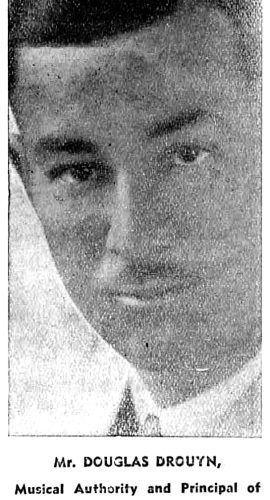
“As well as performing with Jim Davidson’s A.B.C. Dance Band, Wintergarden Symyphony Orchestra and the Trocadero Band, Doug Drouyn was leader of Lennon’s Hotel Band for two years. As a soloist, he played under Geo. Szell (well-known symphony conductor) at a concert in the Grand Theatre, Bowen, Queensland.“
The Drouyn family also includes one of Australia’s most successful surfers – Peter Drouyn; now also known as Westerly Windina. This side of the family also included musicians and artists.
The Drouyn legacy begins.
Douglas and Dorothy became business partners in 1927. In 1932, they opened a music store in George Street, Brisbane which specialized in instrument repairs. The store was successful and grew quickly.
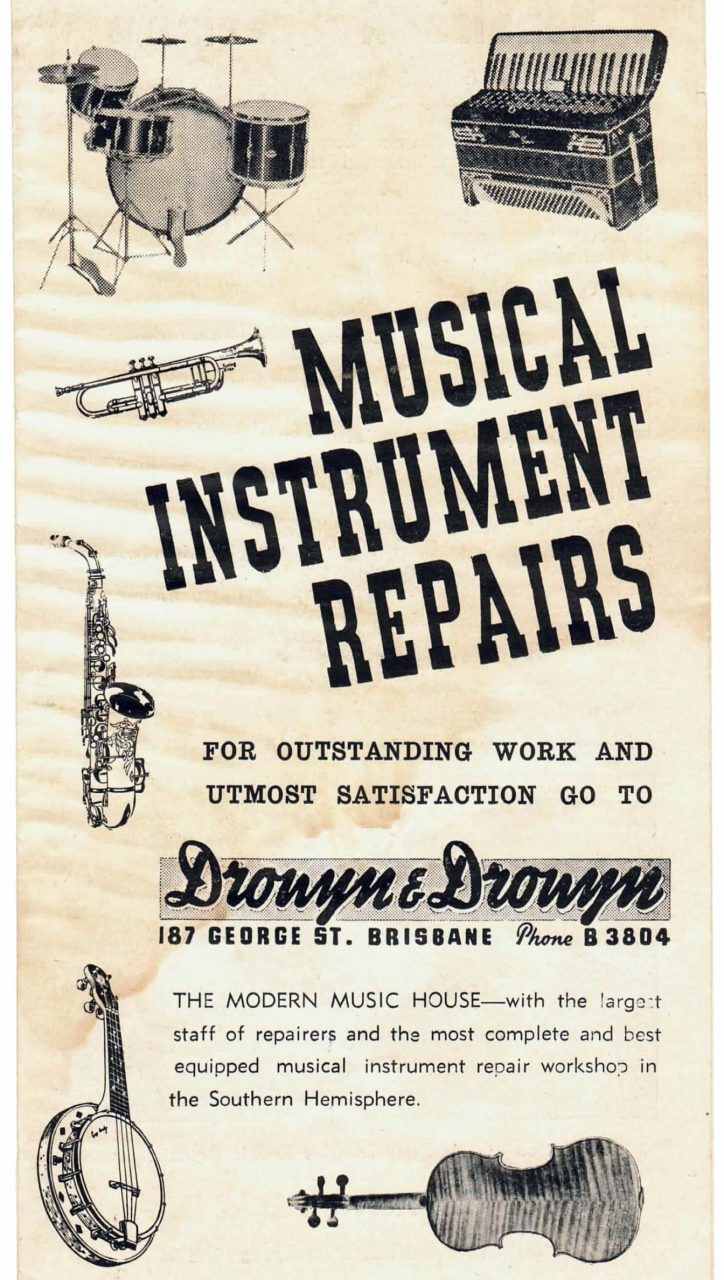
A man of strong convictions, Douglas had a long running battle with the Australian Tax Office, over sales tax. Eventually the case went to the High Court, where the judge noted that Douglas was not so much an activist but rather “someone suffering from mental indigestion”. Douglas evidently ruffled a few feathers, because he was investigated by the authorities over alleged links to the monetary reformist Green Shirt movement. Whatever his political beliefs, his business partnership with Dorothy flourished.
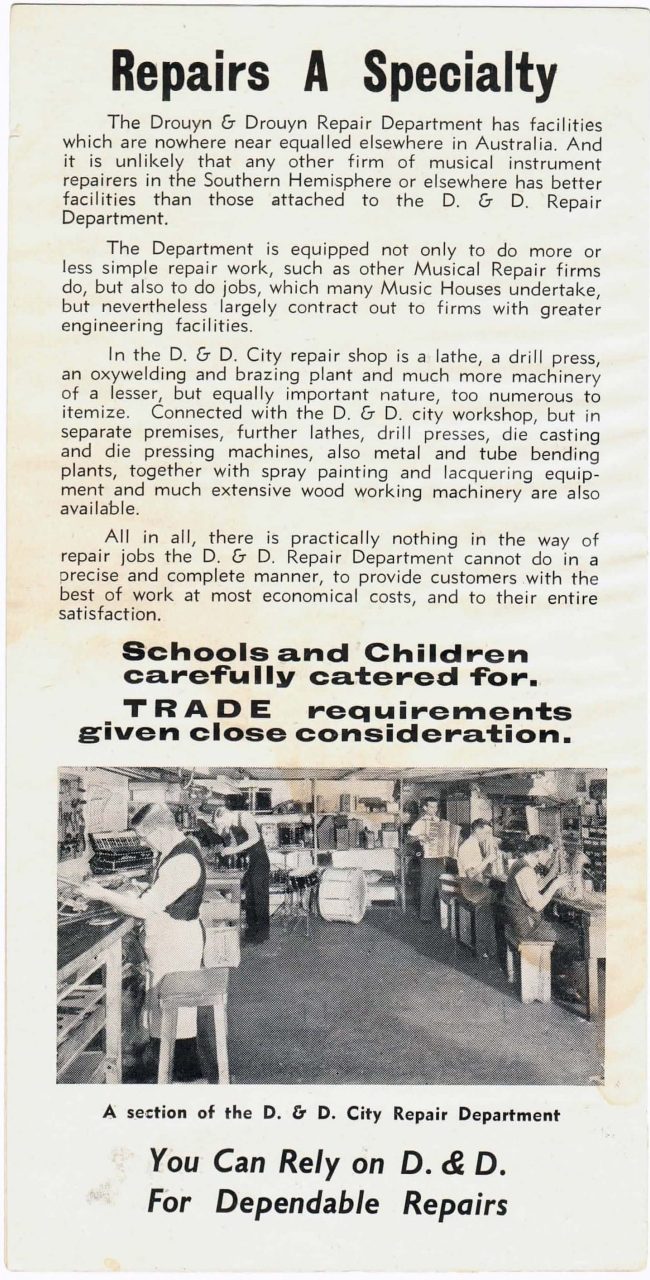

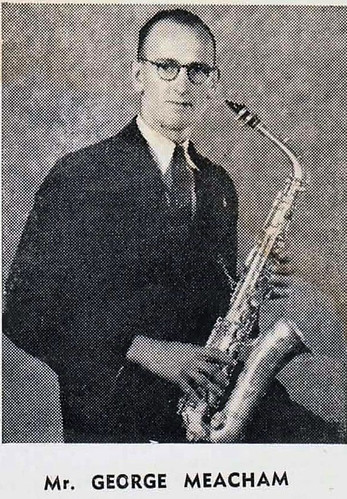
The Dandy drum brand is born.
The city store went so well that they purchased a small building in South Brisbane and began making drums and other small instruments under the “Dandy” brand name, “Dandy” being an anagram of “D and Dy”, for Douglas and Dorothy.
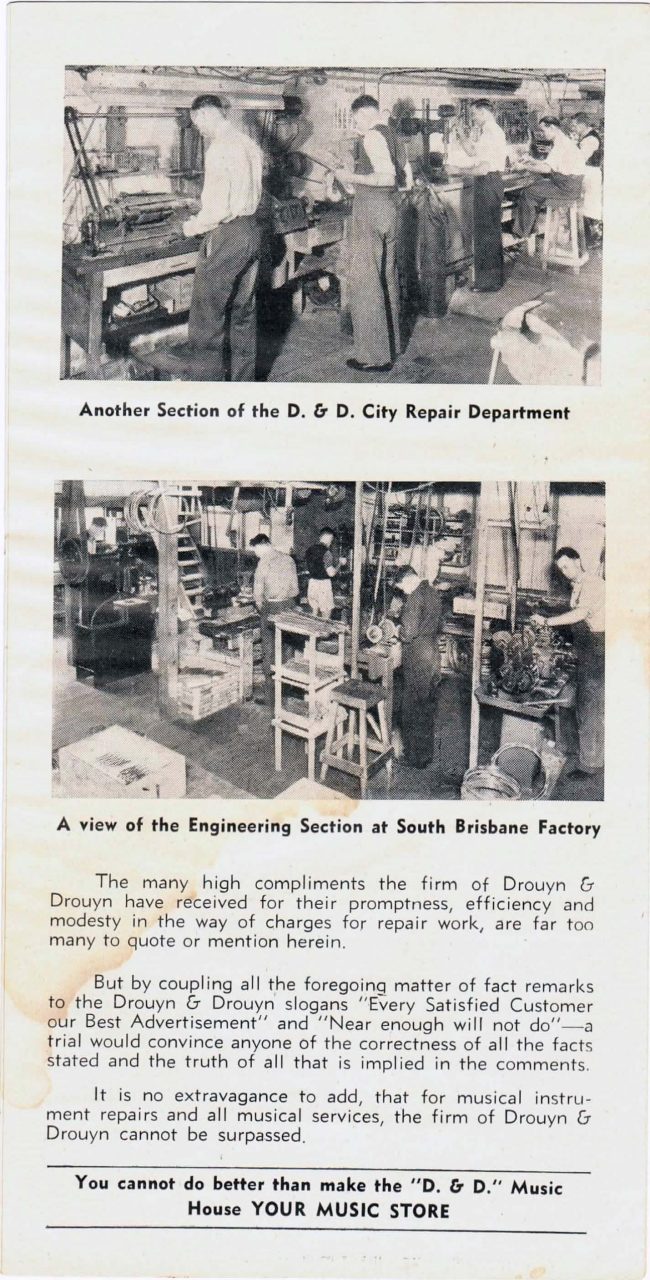
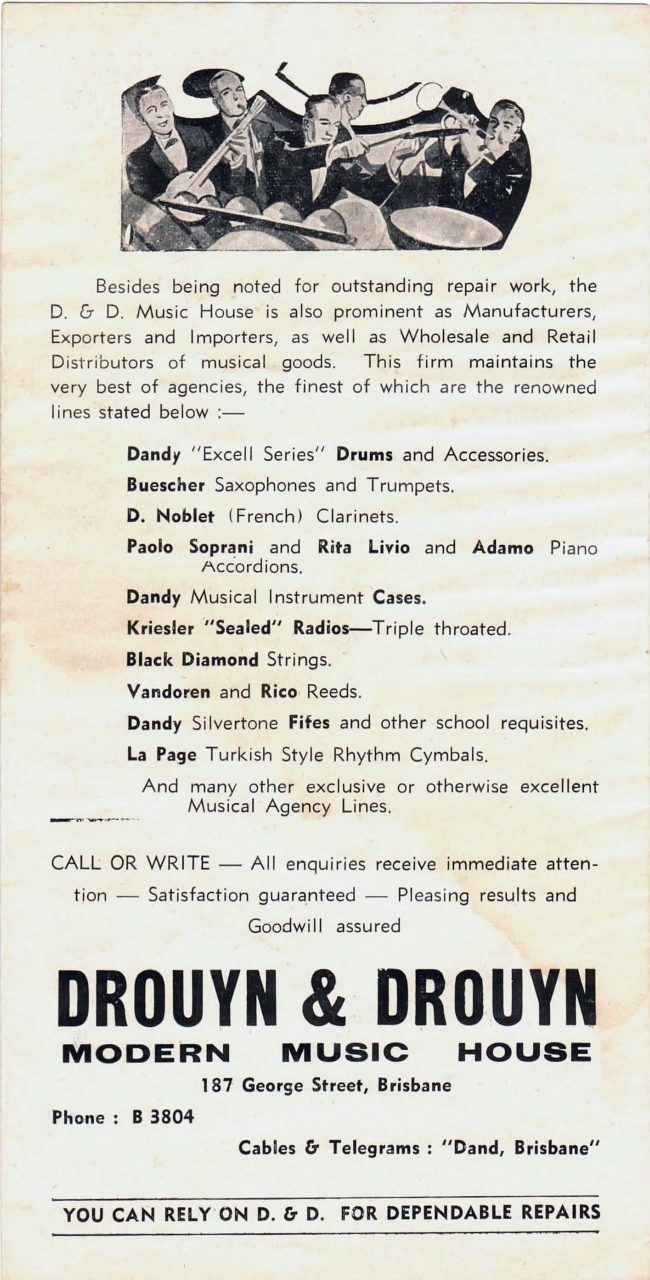
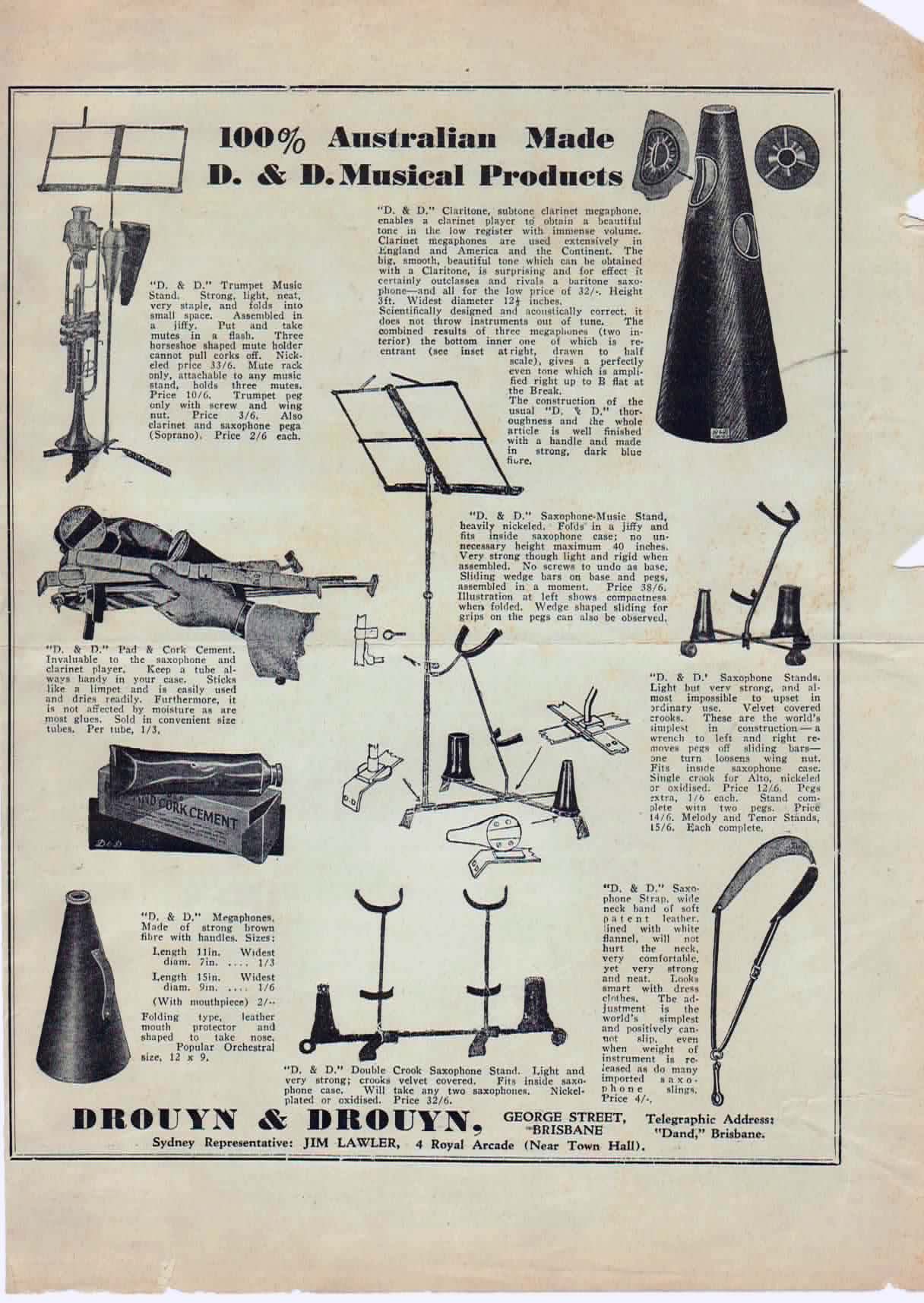
The Drouyn business model.
A Drouyn ‘guarantee’ brochure. Douglas Drouyn wrote good copy; and his business philosophy seems consistent with his political views.
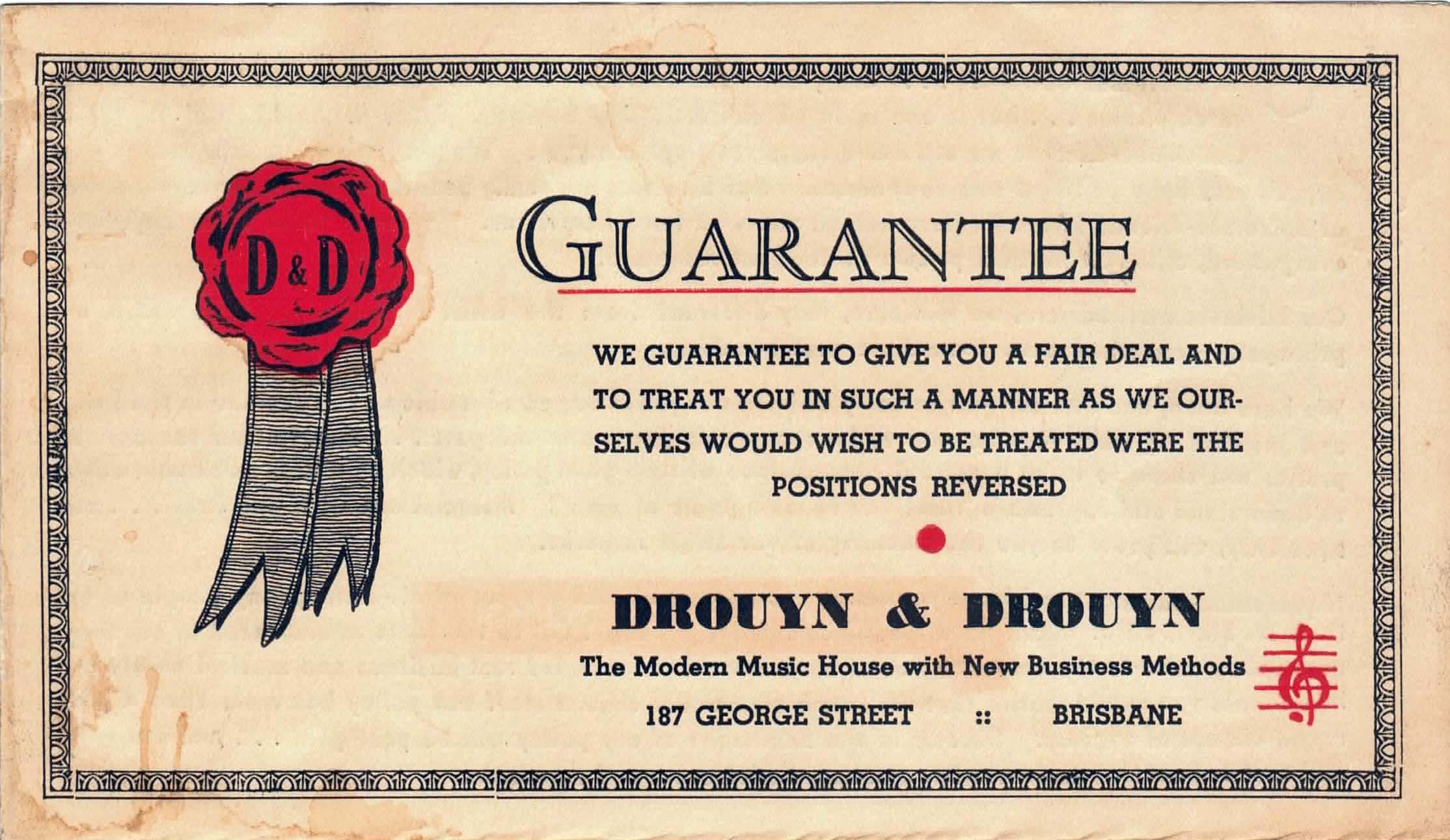
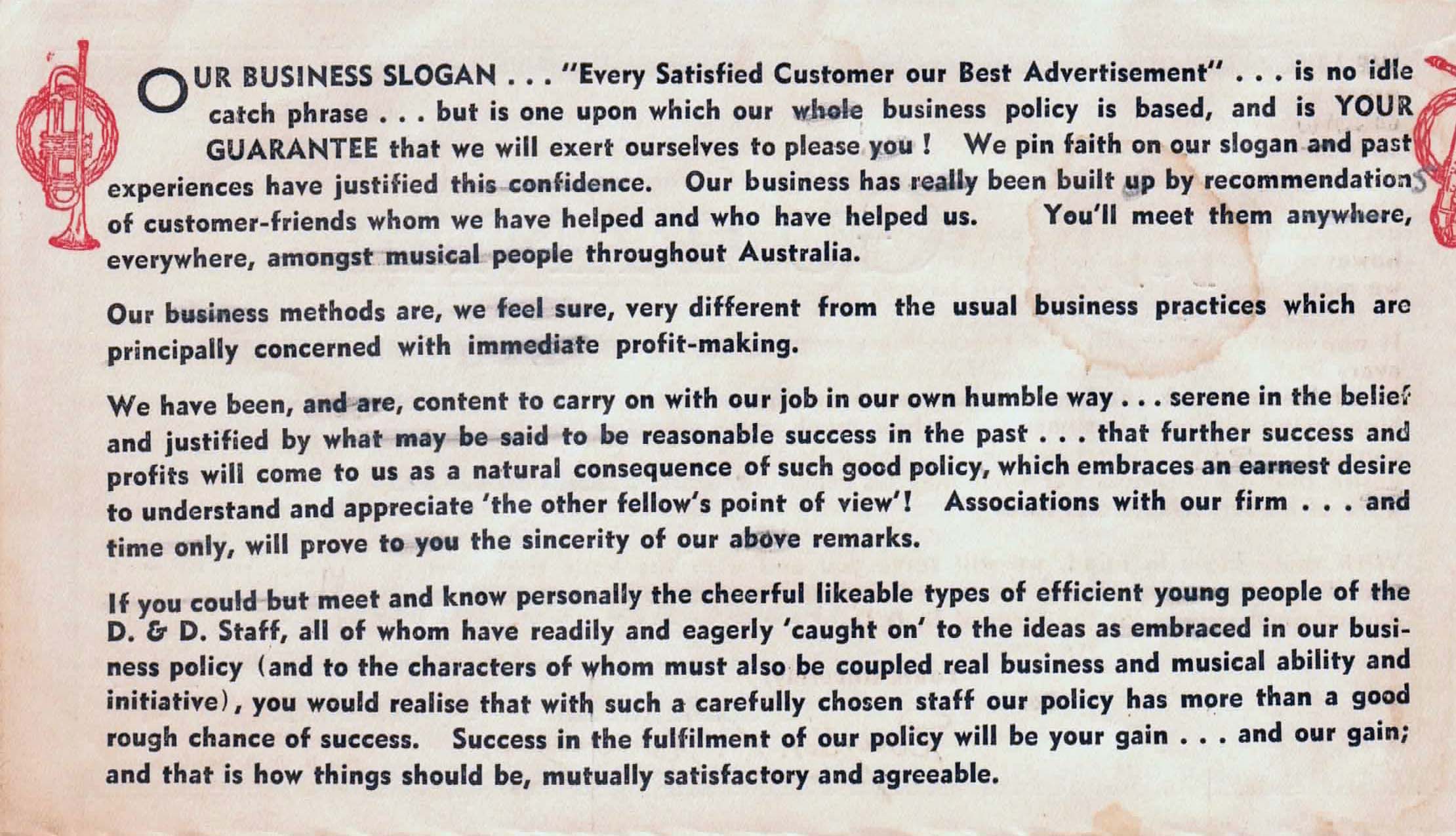


Dandy and The Silvertone.
Drouyn and Drouyn made concert band instruments, primarily for schools. With war shortages and trade restrictions, they found a good local market. Apart from the usual snares and bass drums, they made a successful flute called “The Silvertone” and it’s been estimated that they also made approximately 40,000 fifes. Folklore has it that old ammunition boxes were recycled into hardware for the first drums made in the new factory. Whatever they were made from, they were well received.

A detailed explanation of the Dandy production method. By now, George Meacham, a skilled engineer and musician, was in charge of the factory.

Drouyn craftsmanship on display

A famous set of silver drums
As the only well known manufacturer of concert band instruments in Australia, Drouyn and Drouyn gained important military contracts. They made a complete set of solid silver concert drums to celebrate the Royal Australian Navy’s 50th anniversary. Employees later recalled that every grain of silver had to be weighed and accounted for, even the waste from drilling. The drums are now in the RAN Museum.
Drouyn raw materials.
A question often asked regarding Drouyn drums is: what were they made from? Strange as it may seem today, this was not a major selling point for drum companies in the 1960’s. Drum shells simply had to be strong, round and look good. Market leaders like Ludwig, Gretsch, Rogers and Slingerland mostly wrapped their drums in plastic covering, then sprayed the inside of the shells with paint. They used everything from undercoat, house and even automotive trunk paint, inventing exotic names and bestowing magical sonic properties on the result. All this changed in the 1980’s when clear drum skins became popular. Manufacturers began taking more care with the interiors of their drums; and eventually, often used clear finish for the shell.
The 1960 Dandy catalogue details the process of making a drum kit in the Stones Corner factory, including the number of plies. The composition of the plies is not mentioned. “Heavily and brilliantly chrome plated” certainly is; 24 times in 16 pages. In 1960, it seems that chrome was more important than wood. Overseas, drums were being made from woods such as maple, birch, ash, mahogany and poplar. Drouyn looked for local timber, since Australia has stringent import restrictions and imported timber is expensive. So they made drums from a few species, including Queensland Maple; Huon Pine; Jarrah; Queensland Walnut and other native timbers.
One particular native tree was used for many Drouyn shells – Rose Alder, or Caldcluvia australiensis. Rose Alder is a rain forest tree with a specific gravity of .57. It’s now quite rare; and protected by World Heritage listing. In 1960’s Queensland it was popular for fine furniture, along with Queensland Maple.
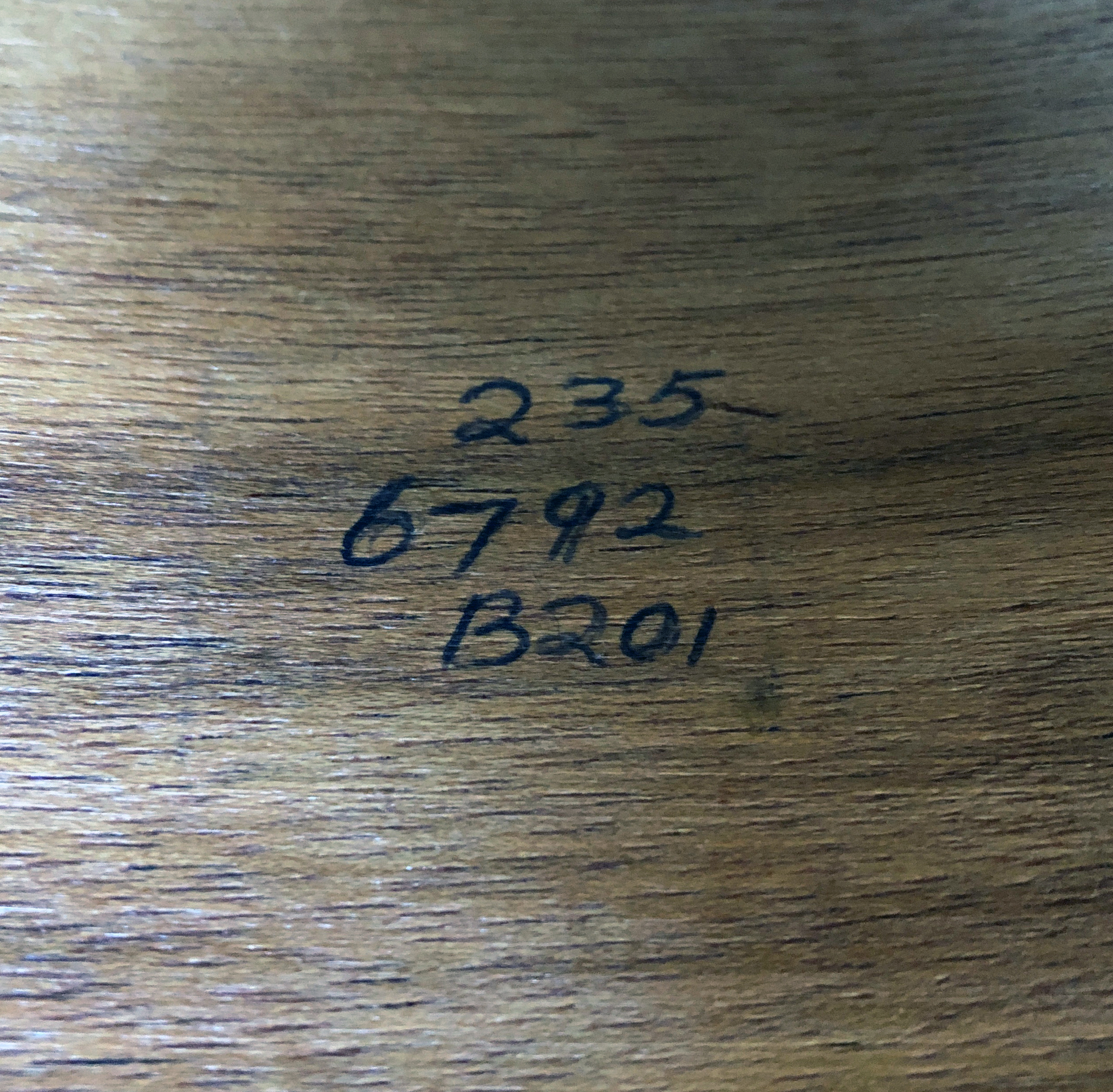
Borrowed designs?
There are similarities in design between the distinctive Dandy/Drouyn bass and tom lugs and those used by English drum makers Premier in the 1930’s. Premier was one of the most influential drum companies in the world. Drouyn used other parts from Premier, such as stands and tension rods.
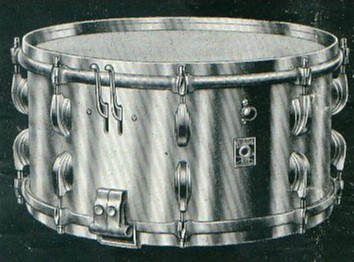
George Meacham and the Gretsch effect.

If there is anyone apart from the Drouyns who was key to the success of the factory on Logan Road, it was George Meacham. George was a trained machinist as well as a musician. He was one of those people who could make virtually anything. George ran the factory for 44 years, designing and implementing much of the manufacturing. His input was vital, especially in two areas.


Dandy/Drouyn drums had no internal reinforcing rings. These are strips of wood often fixed inside drums at the top and bottom of the shell, to keep the drum perfectly round. They allow shells to be thinner, yet stay in shape. They can also support a more engineered bearing edge. Reinforcing rings add to the overall complexity of making a drum. They have to be exact in diameter and fastened correctly, or they may even act as a dampener on the sound. This type of feature also adds expense to the building process.

However, some highly regarded drum makers of the period, such as Gretsch USA, used no reinforcing rings; and used a rounded bearing edge. In Brisbane, George Meacham designed a mold with an inflatable bladder, which was used to compress and hold the ply drum shells while the glue set. In Australia, this would be the first time that this method was used.

Dandy becomes Drouyn.
Some time between 1960 and 1965, the Dandy brand was dropped for “Drouyn”, with a new badge and a new look. The drums changed, though not across all areas of the kit. The biggest change was the snare drum. In keeping with overseas trends, hoops with clips disappeared and new materials were used. Catalogues from this era are rare.

The end of an Australian manufacturing icon.
The 60’s and 70’s were good for Drouyn, but there were big changes on the way. 1965-1975 saw the rise of rock and roll; pub bands; cabaret; the “Americanization” of Australia – all of these trends affected the company. As the 1970’s drew to a close, bigger changes in the global nature of music manufacturing saw the demise or sale of legendary names such as Rogers, Fender, Gibson, Slingerland and Camco. They all struggled against the unstoppable rise of brands from Japan. A few were lucky enough to be reborn in the 1990’s, but for many it was the end. Doug and Dorothy passed on the business to other family members who tried to keep the brand afloat. Sleishman drums, one of the next generation of Australian drum makers, used Drouyn shells for some early kits. It was a good partnership. But in a story which is sadly familiar in home grown manufacturing in Australia, the factory finally closed it’s doors sometime in the late 1980’s.








The history of Drouyn drums is, for the moment, in the past. However many Australian drummers follow the brand with interest. Recently an S100 snare drum sold on eBay for $1200. The Drum Cartel in Brisbane has the largest selection of Drouyn drums and artefacts – drop by next time you get a chance.
Previous: Drouyn
Next: The S100 Alloy Snare


